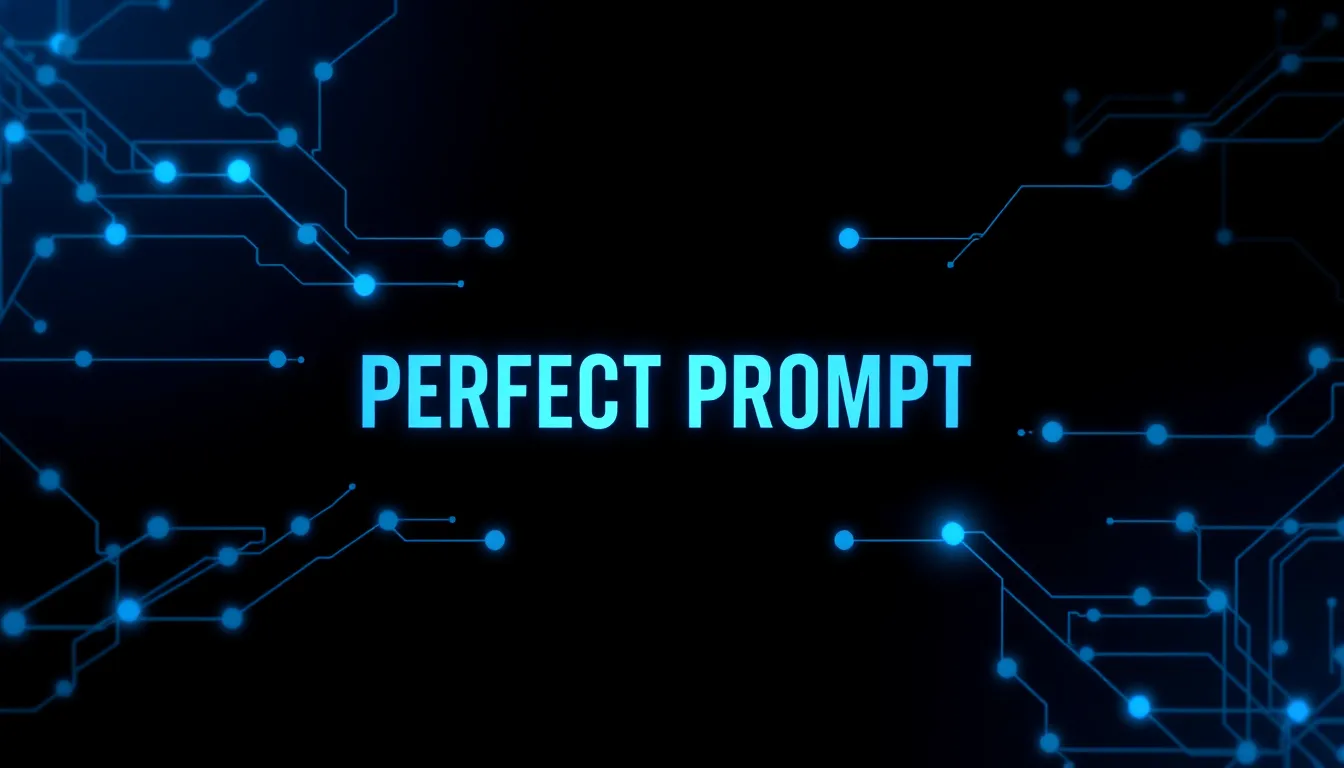
Introduction: Why Most AI Prompts Fall Flat
We’ve all been there. You type a question into ChatGPT, Claude, or Gemini… and the response is either too generic, too long, or just off-base. The problem isn’t the AI — it’s the prompt.
Writing a good prompt is like giving GPS directions. If you only say, “Take me somewhere nice,” you might end up in the wrong place. But if you say, “Take me to the Italian restaurant downtown with outdoor seating at 7 PM,” you’ll get exactly what you want.
In this guide, we’ll deconstruct the anatomy of a perfect AI prompt — breaking down its key parts, showing real-world examples, and sharing tools to make prompt writing effortless.
The 5 Core Elements of a Perfect AI Prompt

A great AI prompt usually includes these five components:
1. Role Definition
Give the AI a role so it knows how to “think.”
- Example: “Act as a UX researcher preparing a summary of customer interview insights.”
2. Task Clarification
Be specific about the output.
- Weak: “Write about prompts.”
- Strong: “Write a 1,200-word blog post explaining the anatomy of a good AI prompt, including examples and FAQs.”
3. Required Inputs
Tell the AI what details or context matter.
- Example: “Use the keyword ‘how to write a good prompt’ naturally in headings and body text.”
4. Output Format
Guide structure and style.
- Example: “Organize the response with headings, bullet points, and a concluding summary.”
5. Value-Add Constraint
Push the AI to go beyond generic.
- Example: “Provide at least one real-world example and a simple checklist for readers.”
A Deconstructed Prompt Example

Here’s how all five parts come together.
Prompt Example:
“Act as a SaaS content strategist. Write a 1,200-word blog post on the anatomy of a good AI prompt. Include five core elements, examples, and an FAQ section. Use the keyword ‘how to write a good prompt’ naturally. Organize the article with H2/H3 headings, bullets, and a final soft CTA. Provide unique insights, not just generic advice.”
Why It Works:
- Role: SaaS content strategist → defines tone & perspective
- Task: 1,200-word blog post → clear scope
- Inputs: keyword and topic → SEO aligned
- Format: headings, bullets, FAQ → structured output
- Constraint: “unique insights” → ensures added value
Common Mistakes in Prompt Writing
- Being too vague → “Summarize this” with no context.
- Overloading with instructions → long walls of text confuse the AI.
- Not specifying format → leading to random outputs.
- Forgetting constraints → results are often too generic.
✅ Pro Tip: Use My Magic Prompt’s prompt builder to generate structured, ready-to-use prompts with role, format, and context built in.
How My Magic Prompt Makes Prompt Writing Easy
Even with frameworks, crafting prompts from scratch can be time-consuming. That’s where My Magic Prompt helps:
- 🛠 Prompt Builder: Instantly generate structured prompts.
- 📑 Prompt Templates: Use pre-designed templates for blogs, UX research, or creative writing.
- ⚡ AI Toolkit: Organize, test, and optimize prompts in one place.
🔗 Explore the Magic Prompt Chrome Extension to bring this directly into your browser workflow.
External Expert Perspectives
It’s not just productivity nerds saying this — industry leaders agree:
- OpenAI’s guide on prompt engineering shows how structured prompts improve reliability.
- A Harvard Business Review article on AI productivity highlights why precise instructions matter for getting business value from AI.
Checklist: How to Write a Good Prompt
- Assign the AI a role
- Define a clear task
- Provide necessary inputs
- Specify format & tone
- Add a constraint for value
FAQs on Writing Good Prompts
1. What’s the difference between a good and bad AI prompt?
A good prompt is specific, structured, and goal-oriented. A bad one is vague and open-ended.
2. Can prompts really improve productivity?
Yes — a well-written prompt can cut hours of editing and rework, especially for writing, UX research, and brainstorming tasks.
3. How can I organize my prompts?
Tools like My Magic Prompt let you save, categorize, and reuse prompts instead of reinventing them each time.
4. Do prompts work across all AI models?
Yes, but the effectiveness varies. ChatGPT, Claude, and Gemini respond better when prompts are structured with roles, tasks, and constraints.
5. What’s the fastest way to start writing better prompts?
Use templates from the My Magic Prompt AI toolkit — they give you a strong foundation to customize.
Conclusion: Build Better Prompts, Get Better Results
The truth is simple: AI is only as good as the instructions you give it. By understanding the anatomy of a perfect AI prompt, you’ll save time, reduce frustration, and consistently get higher-quality outputs.
If you’re ready to level up, start experimenting with structured prompts using My Magic Prompt — your shortcut to faster, smarter, and more strategic AI workflows.

